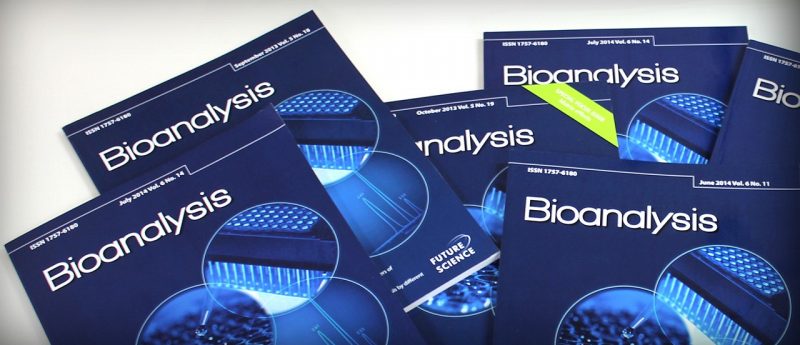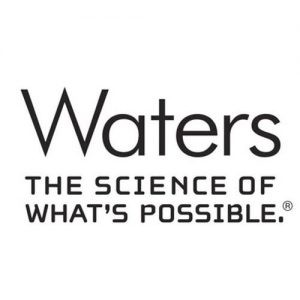Peek behind the paper: the impact of nonspecific binding on oligonucleotide bioanalysis

In this feature, we peek behind the paper with Jennifer Nguyen and Martin Gilar both of Waters Corporation (MA, USA) to gain insights into how nonspecific binding impacts oligonucleotide bioanalysis.
Read the full article here – Assessing the impact of nonspecific binding on oligonucleotide bioanalysis
 Jennifer Nguyen, PhD
Jennifer Nguyen, PhD
Principal Scientist, Waters Corporation
Jennifer Nguyen is a Principal Scientist within the Chemistry R&D at Waters Corporation. Since joining Waters in 2015, she has worked on developing new analytical technologies for both large and small molecules, including the CORTECS solid-core family, BioResolve product line and MaxPeak™ Premier Technology. Her current research centers on improving the characterizationand quantitation of biopharmaceuticals and nucleic acid therapeutics. She received her PhD at the University of Copenhagen (Copenhage, Denmark) and has over 10 years of experience in LC–MS chromatographic separations of various molecules, with a focus on advancing new technologies.
 Martin Gilar, PhD
Martin Gilar, PhD
Scientific Fellow, Waters Corporation
Dr Martin Gilar is a Scientific Fellow in the Separations Research group at Waters Corporation. He has more than 30 years of experience in the separation sciences, namely chromatography, electrophoresis and mass spectrometry. His research interest is the analysis of biopolymers such as oligonucleotides, peptides, glycans and proteins. He has published over 70 peer reviewed papers.
Dr Gilar received his PhD in analytical chemistry from the Institute of Chemical Technology in Prague (Czech Republic, 1996). He spent his postdoc years in Hybridon Inc. (MA, USA) from 1996–1998 and Northeastern University in Boston (MA, USA, 1998) developing separation methods for antisense oligonucleotides and fraction collector for DNA molecules. Since 1998 he has worked at Waters in Milford (MA, USA).
Questions and answers
1. Could you give us a background on your/your team’s past and current research work?
MG: Waters’ R&D group has been developing techniques for the analysis of oligonucleotides since 2000. We demonstrated that a UPLC technique utilizing <2 micron sorbents can baseline resolve oligonucleotides up to approximately 60 mer lengths. We have also investigated ion-pairing mobile phases that enable LC–MS analysis of therapeutic oligonucleotides with great sensitivity. This research continues with further advances in nucleic acid analysis methods to be presented in the near future as application notes and peer-reviewed papers.
JN: In the realm of related projects, we recently devised a method for the rapid analysis of 5’ cap structures of mRNA. This was a great project to follow up our research in this paper with, since these structures are essentially like the oligos we used. We could perform quick, relative quantitation of the capping efficiency of mRNA using hybrid surface columns and a simple and easy-to-use LC–MS–ToF system.
2. Your research article, ‘Assessing the impact of nonspecific binding on oligonucleotide bioanalysis’, was recently published in Bioanalysis. Could you give us a summary of the work done in the article?
JN: Of course. In this paper, we really wanted to investigate what kind of system refinement could improve our bioanalytical capabilities i.e. in terms of achieving lower limits of detection and quantitation, better reproducibility and more. When we were working on developing the hybrid surface technology, we immediately thought that this could be used to reduce oligonucleotide nonspecific binding to metal-based LC columns and systems. Our first experiment in the paper demonstrates this – a stainless steel column showing lower recoveries than a hybrid surface column upon initial injections. The stainless steel required a high sample load for conditioning in order to reach acceptable peak area recoveries.
However, we noticed that at certain pH conditions (such as pH 8 vs 6), there was less conditioning of the stainless steel column needed for acceptable recovery. Alternatively, we also noticed certain conditions (i.e. lower pH and lower mass loads) where the stainless steel columns just did not appear capable of achieving the level of recovery of hybrid surface columns. We investigated this phenomenon to further tease out these trends and relate it to some fundamental science. Interestingly, we noticed that the conditioning benefit for stainless steel columns is really transient in nature and may never reach the recoveries obtained from a hybrid surface column.
As a sort of obvious next step, we evaluated the performance when we applied these hybrid surfaces to just the column, then both the column and LC. We also wanted to see if there would still be that recovery difference vs a stainless steel system if we attempted to fully condition our setups. Ultimately, with this experiment, we could improve the lower limit of detection of our assay with each hybrid surface component we added.
Finally, we wanted to measure these advantages using LC–MS, the typical mode of quantitation for our assays. Here, we saw a 17-fold improvement in the limit of quantitation observed! These are neat solutions, but we can presume that this increase would also translate to analytes in matrix. In fact, we have seen this in our own studies – this is planned data for our next paper.
3. How did you come to select the hybrid surfaces utilized in the study to reduce metal-sensitive analyte interactions?
MG: During the analytical research, we recognized that a small amount of sample may be adsorbed on the metal hardware of LC columns and instruments. This problem is not unique to oligonucleotides. However, highly charged oligonucleotides are more prone to ionic metal-surface adsorption. At that time, we had active research at Waters focused on the modification of metal surfaces. This research was applied to oligonucleotide analysis with great success. Chemical modification of internal surfaces of the chromatographic column including the frits was found to be beneficial for analysis of all acidic samples, including small molecules, peptides and oligonucleotides.
JN: Following up on Martin’s comments, I think most of us who would be interested in our paper (our bioanalytical scientists) understand that nonspecific binding is a huge problem in this area of research and especially at low concentrations. We are always trying to improve instruments, consumables and techniques to reach lower and lower limits of detection. With the research into hybrid surfaces that we were working on, it just made a lot of sense to apply it to a bioanalytical perspective, and we think it works quite well from our data!
4. Have there been other methods that reduce the impact of these nonspecific binding interactions on oligonucleotide bioanalysis?
JN: Since nonspecific binding has been such a historical problem for chromatographic analyses – and not just for analytes that are oligonucleotides – there are many different approaches that have been employed to reduce adsorption to metals and nonspecific binding. For instance, one of the most common approaches is through sample passivation and conditioning of the fluidic flow path of the LC, including the column. This approach saturates the active sites of metals or other surfaces that might interact with our analytes. However, it can be time-consuming and, as we describe in our manuscript, may not ultimately prevent all nonspecific binding.
Additionally, most chromatographers are familiar with the use of chelating agents, where EDTA or other additives are commonly used in oligonucleotide separations to prevent metal ion adduction. However, the trend with these mitigation strategies is that there are drawbacks. Chelating agents can cause ion suppression, which can be difficult to overcome for those seeking MS sensitivity in their bioanalytical applications.
PEEK is a great alternative, but its hydrophobic nature may also cause issues in terms of secondary interactions. Additionally, unless it is lined in metal tubing, it cannot withstand high pressures. Even then, due to the nature of PEEK as well, higher variability exists when we think of dimensions such as column ID and this has been shown to have an effect in the reproducibility of our chromatographic separations.
These aren’t the only methods that have been employed, just the ones that are, in my view, the most common and effective alternatives.
5. At Waters Corporation, what do you hope the future will hold for this area of study?
MG: The first generation of chemically modified surfaces was inspired by hybrid silica sorbents widely used in LC. These materials are stable in a wide range of pH and offer hydrophilic surface nature.
JN: I am hoping that we can continue to discover the benefits of these hybrid surfaces for not just bioanalytical applications, but for any sort of research. Moreover, I think the future of oligonucleotide therapeutics – nucleic acid therapeutics – is incredibly bright, as we’ve seen throughout the past years. I am hoping we’ll continue to see and contribute to advances in technology, research, collaborations and whatever else we can do to face the analytical challenges ahead for these newer modalities!
In association with:




